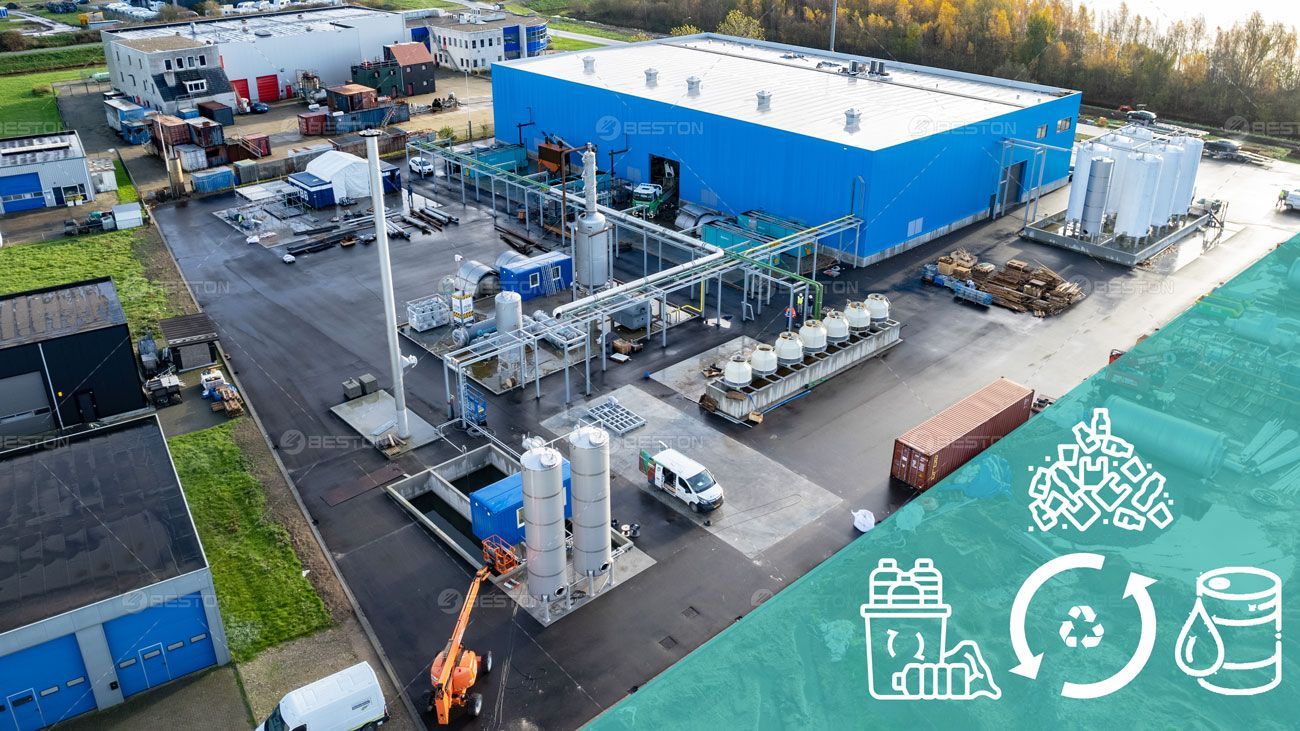Potential of Pyrolysis: Transforming Waste Plastic to Sustainable Fuel
- By Beston Charcoal
- •
- 02 Apr, 2024
- •

Understanding Pyrolysis and Its Mechanisms
Pyrolysis is a thermochemical process that involves the decomposition of organic materials, such as plastic waste, in the absence of oxygen. Under controlled temperature and pressure conditions, plastic polymers undergo thermal degradation, breaking down into smaller hydrocarbon molecules. These molecules can then be condensed and collected as liquid or gaseous fuels, including diesel, gasoline, and syngas.Key Components of Pyrolysis Systems
- Feedstock Preparation: Waste plastic is sorted, shredded, and cleaned to remove contaminants and optimize pyrolysis efficiency.
- Pyrolysis Reactor: The reactor chamber, where waste plastic is heated to high temperatures (typically between 300°C to 800°C) in the absence of oxygen, initiating the pyrolysis process.
- Product Recovery System: Condenses and separates pyrolysis vapors into liquid and gaseous fuels, ready for further processing or utilization.
- Gas Treatment System: Removes impurities and pollutants from the pyrolysis gas to meet environmental regulations and safety standards.
Converting Plastic to Fuel: Environmental and Economic Implications
1. Waste Plastic Management
The conversion of plastic to fuel through pyrolysis offers a sustainable alternative to traditional waste management methods such as landfilling and incineration. By valorizing plastic waste as a feedstock for fuel production, pyrolysis reduces the burden on landfills, mitigates plastic pollution, and conserves valuable resources. Additionally, the energy recovery from waste plastic contributes to a circular economy approach, where materials are reused and recycled to minimize waste generation.2. Energy Generation and Resource Recovery
Pyrolysis facilitates the recovery of energy and resources from waste plastic, thereby reducing reliance on fossil fuels and promoting energy independence. The liquid fuels produced from plastic to fuel processes can be used directly as transportation fuels or as feedstocks for further refining into higher-value products. Furthermore, the syngas generated during pyrolysis can be utilized for power generation or as a chemical feedstock in industrial processes, enhancing energy efficiency and resource utilization.Advantages of Pyrolysis in Plastic to Fuel Conversion
1. Versatility and Feedstock Flexibility
Pyrolysis technology offers versatility and feedstock flexibility, enabling the conversion of various types of plastic waste into fuel products. Whether it's polyethylene, polypropylene, polystyrene, or mixed plastics, pyrolysis processes can effectively process a wide range of plastic materials, regardless of their composition or contamination levels. This flexibility reduces the need for stringent sorting and preprocessing of plastic waste, simplifying the plastic to fuel conversion process and increasing operational efficiency.2. Environmental Sustainability
The environmental sustainability of pyrolysis-based plastic to fuel conversion lies in its ability to mitigate plastic pollution and reduce greenhouse gas emissions. By diverting plastic waste from landfills and incinerators, pyrolysis prevents the release of harmful pollutants into the environment, including microplastics, dioxins, and volatile organic compounds. Furthermore, the utilization of waste plastic as a renewable feedstock for fuel production reduces the carbon footprint associated with fossil fuel extraction and combustion, contributing to climate change mitigation efforts.Challenges and Future Directions
Despite its numerous benefits, pyrolysis-based plastic to fuel conversion faces several challenges that must be addressed to realize its full potential. These challenges include:- Economic Viability: Achieving cost-effective plastic to fuel conversion requires optimizing process efficiency, reducing capital and operational costs, and securing stable market demand for fuel products.
- Regulatory Compliance: Adhering to environmental regulations and quality standards is essential to ensure the safety and sustainability of pyrolysis operations and fuel products.
- Technological Innovation: Continued research and development are needed to improve pyrolysis process efficiency, increase fuel yields, and enhance product quality and purity.
